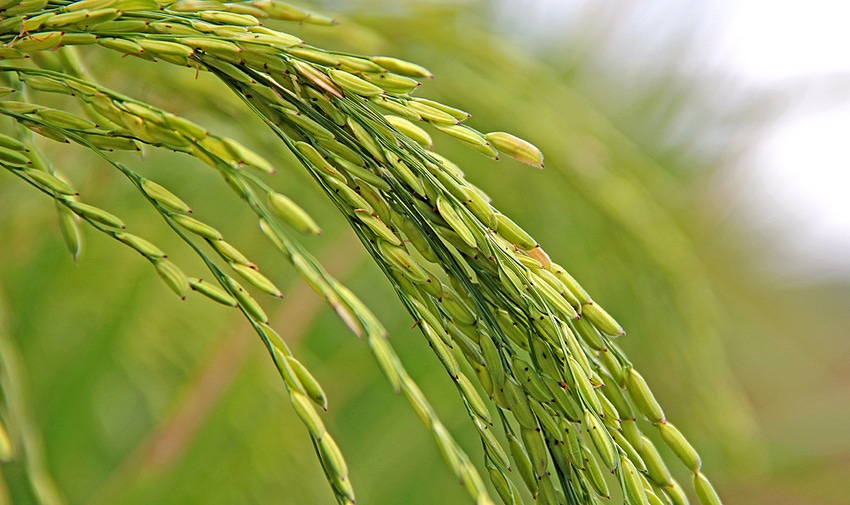
Things aren’t always as simple as they seem in rice markets
“Currently, I have a lot of respect for Cambodia,” Zwinger says. “They have been in an amazing push to increase their quality, as has Thailand over the last 20 years and as has Vietnam. They have done an amazing job of increasing their quality and building their industry as a whole.”
October 10, 2015

On Sept. 18, Indonesia’s State Logistics Agency or Bulog said the national stock of subsidized rice would be close to running out by the end of the year, and it would have to import 1.5 million metric tons of rice.
Three days later, the Indonesian government said, no, it did not need to import rice, and it would be exporting rice, instead, because the building El Nino weather phenomenon could cause harvest failures in some areas.
That pattern continued for the remainder of September with the country’s vice president, Jusuf Kalla, saying it would buy rice on Sept. 25 only to be contradicted by the Indonesian president, Joko Widodo, on Sept. 28, who said the country had plenty of rice, says Jeremy Zwinger, president and CEO of The Rice Trader.
“Then on the first of October, they did buy,” says Zwinger, who spoke on the rice market outlook for the rice markets on the University of Arkansas’ Food and Agribusiness Webinar on Oct. 6. “And you would think it’s simple, it’s done. But, as of yesterday, the president is saying Indonesia has enough rice stocks until December and will not import rice.”
To Zwinger the situation in Indonesia summarizes the politics of rice. “Even when it's simple, it's not simple,” he said. “And there's so much politics in this game that you have to know it's never as simple as the first layer.”
There’s no doubt that the El Nino weather phenomenon is having an impact, especially in Asia, and overall rice stocks are dropping, says Zwinger, whose firm is mostly known as Farm and Trade Inc. He also consults for a number of international businesses, including several Fortune 500 companies, and chairs the World Rice Conference coming up in Malaysia.
El Nino 'fascinating'
“I find El Nino very fascinating,” says Zwinger. “Only God knows the weather is what I always come back to. Obviously, there are a lot of production issues. But, interestingly, the California El Nino is not happening.”
The dollar, meanwhile, has become very strong vs. other currencies, Zwinger notes. “And this is affecting the actual trade. But, if you look overtime, the dollar is strong, but it's not as strong as it was in 2001-02. And it's definitely not as strong as it was in the mid '80s.
Looking at a chart of the ratio of Thai and Vietnamese rice prices to wheat and corn, viewers of the webinar were reminded that rice prices jumped in 2008, but have trailed downward since then with rice now being below what Zwinger calls the “cheap line.”
Zwinger shared a slide compiled by commodity analyst Shawn Hackett. “He has some key technical signs that the overall commodity market probably needs to move up and move up relatively quick. It being harvest time it's probably not going to be aggressive at this point, but it definitely shows some signs.
“What strikes me is like this simple thing with Indonesia the market and the psychology doesn't always come together at once,” he says. “So sometimes the market can be showing you, hey, look, it should be going higher, and it denies it. And when it denies it, you'll actually see a springboard build so that the coming run is actually higher.”
Such moves are difficult to forecast with any precision, “but you can show when it starts to begin, and I think that's what's key. This graph shows you basically are in a time that you saw in 2008, in the 1970s and today where wheat in China and India, the two largest countries in the world, are actually extremely down in stocks.”
Stocks tighter than reporting
Zwinger says he believes stocks are much tighter than is being reported in either country. “It doesn't mean it's going to run tomorrow, but it means the process has probably started.”
Having recently returned from a trip to Asia, Zwinger says he’s struck by the amount of border trade that occurs between Cambodia, Thailand, Vietnam and China, trade that often is not always reflected in the statistics.
“Currently, I have a lot of respect for Cambodia,” he said “They have been in an amazing push to increase their quality, as has Thailand over the last 20 years and as has Vietnam. They have done an amazing job of increasing their quality and building their industry as a whole.”
The El Nino is having an impact in the region, he says, “but stocks were dropping before the El Nino began.”
To watch Zwinger’s presentation on “Global Rice and Commodity Markets Will They Move Higher; have we hit the bottom!” visit http://www.uaex.edu/farm-ranch/economics-marketing/food-agribusiness-webinars/posts/10-09-15-zwinger-rice-outlook.aspx
The Food and Agribusiness Webinar Page can be found at http://www.uaex.edu/farm-ranch/economics-marketing/food-agribusiness-webinars/
About the Author(s)
You May Also Like





